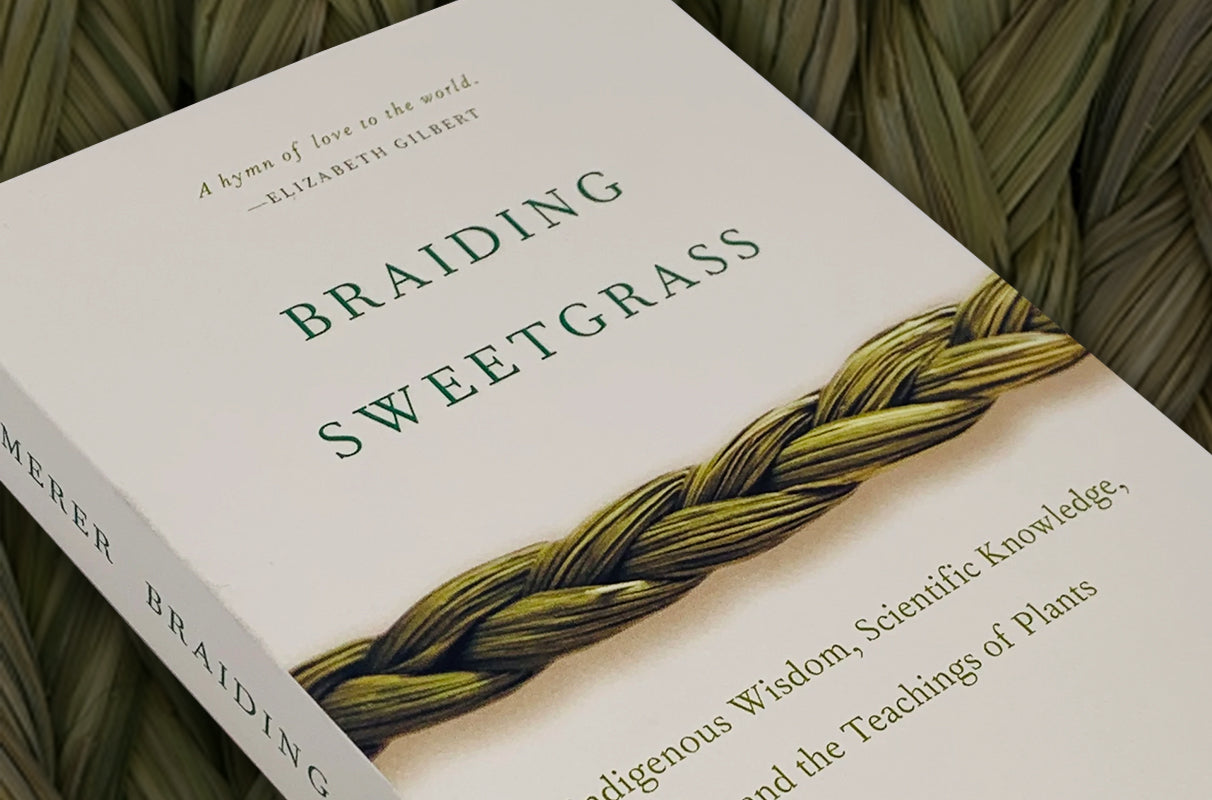
October 30, 2023
In the world of environmental literature, some works transcend genre boundaries to offer a fresh and inspiring perspective on our relationship with nature. Braiding Sweetgrass: Indigenous Wisdom, Scientific Knowledge, and the Teachings of Plants by Robin Wall Kimmerer is one of those works. Published in 2013, this book invites readers on a masterful exploration of Indigenous wisdom, scientific knowledge, and the profound lessons plants can offer us.
This book immediately came to mind upon reading the recent “Interconnected Disaster Risks Report 2023” from the United Nations University - Institute for Environment and Human Security (UNU-EHS).
The report identifies six critical tipping points that pose severe risks to both ecological systems and humanity. Without adequate innovative measures to address the dual crises of climate change and biodiversity collapse, profound and potentially irreversible transformations loom in the future.
In an interview with Radio-Canada, Dr. Jack O'Connor, the lead author of the report, emphasizes that our approach must be to "become one with nature" to maintain the conditions necessary for sustaining life on Earth. This is precisely what Robin Wall Kimmerer invites us to do in her book.
Meeting the Author
Robin Wall Kimmerer is an author, botanist, and member of the Potawatomi Nation. Her Indigenous heritage deeply influences her work, both as a scientist and as a writer. She brings a unique perspective on how we interact with nature, drawing from her ancestors' wisdom and intertwining it with contemporary scientific discoveries.
The title Braiding Sweetgrass refers to the ancient practice of braiding sweetgrass (Hierochloe odorata), symbolizing how Kimmerer weaves together Indigenous traditions and Western science to create a coherent and powerful narrative.
The Relationship Between Humans and Nature
A central theme of the book is the relationship between humans and nature. Kimmerer argues that modern society has lost sight of the deep spiritual connection we should have with Earth. She highlights how Indigenous peoples view Earth as a mother, a living entity to whom we owe respect, gratitude, and protection. This contrasts starkly with the way nature is often exploited in modern times, where resources are taken without considering the long-term consequences.
Plants as Teachers
Kimmerer offers a fascinating perspective on plants as teachers. She explains how each plant has a lesson to offer, whether it's about resilience, adaptability, patience, or generosity.
In addition to her spiritual perspective, Kimmerer is also an accomplished scientist. She teaches botany and ecology, allowing her to bring scientific elements into her reflections. For example, she describes in detail the process of photosynthesis, which is essential to plant life, and how this can be interpreted as an act of giving from plants to the entire planet.
Reclaiming Indigenous Knowledge
An important aspect of the book is Kimmerer's call for the revaluation of Indigenous knowledge. She argues that Indigenous peoples hold a wealth of knowledge that can significantly contribute to environmental conservation. She urges readers to listen to and learn from these voices that were marginalized for too long, suggesting that harmonious coexistence between humans and nature can only be achieved if we are willing to learn from Indigenous peoples.
"Gifts" and "Reciprocity"
Kimmerer also explores the concepts of "gifts" and "reciprocity." She explains how plants freely give their resources to support life on Earth and that humans should reciprocate by giving back. She discusses the need for a reciprocal relationship with nature, where we care for it just as it cares for us. This notion of reciprocity is essential for Kimmerer and runs throughout her book.
The Quest for Harmony
One of the central questions Kimmerer poses is how we, as a society, can regain harmony with nature. She suggests that this starts with a paradigm shift, recognizing that nature is not an inexhaustible resource to exploit, but an entity with which we must coexist in harmony. She advocates for taking an active role in environmental preservation, protecting biodiversity, and respecting the teachings of plants and Indigenous peoples.
Braiding Sweetgrass is a deeply inspiring book that offers a profound reflection on our relationship with nature. Robin Wall Kimmerer skillfully weaves together Indigenous wisdom and Western science to create a captivating and instructive narrative.
Her call for reciprocity with nature and environmental preservation resonates strongly, encouraging readers to rethink their relationship with the natural world. In addition to urging us to engage in a more respectful and harmonious relationship with nature, Braiding Sweetgrass reminds us that, ultimately, we are part of it.

